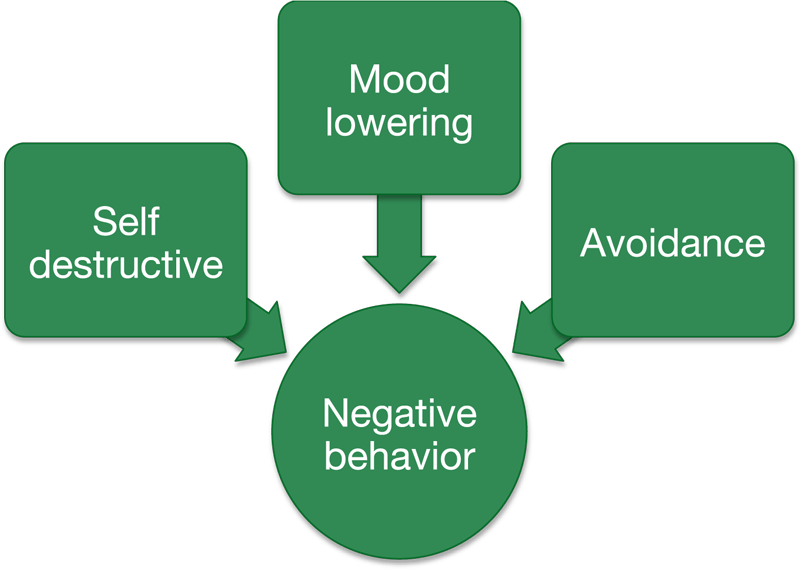Problematic Behavior
Do your problems fall into one specific category?
Do these problems overlap?
This exercise helped you to realize that your problems never fall into one specific category. This is because everyone has a variety of problems in their life. Although everyone has problems, it is possible to cope with those issues better. Even though our problems are uniquely different, there is usually some degree of overlap. For example, a common problem is not getting enough quality sleep. Another problem is worrying about something. Although these problems are different, you can see that worrying may be contributing to poor sleep. By looking at your problems, and understanding their relationship, you can start to eliminate the significant chain reaction of the issues you are facing.
That is where CBT can be extremely helpful. Using research-supported CBT principles, you will learn to separate your thoughts, emotions and behavior. This will give you a better understanding of what is happening and help you to find a better way to deal with it. When we have too many problems, they tend to affect our thoughts, which, in turn, affects our emotions. These "disturbed" emotions can result in a variety of unhealthy and unhelpful behaviors, which can actually make things worse. One example of these behaviors is avoidance. This is a well-known coping strategy for many people to deal with anxiety that can often lead to greater problems.
Unhealthy behaviors
Suffering from feelings of anxiety or any emotional challenge, doesn’t make you a bad person. However, the negative thoughts and emotions can drive us to behave differently. Our unhealthy behaviors work as coping strategies. While they may seem effective at first, they cause damage over the longer term, by fueling your unhappiness. It’s now time for you to write down your unhealthy behaviors!
Worksheet: My unhealthy behaviors
Different types of negative behavior

There are three main types of negative behavior: avoidance behavior, mood lowering behavior and self-destructive behavior. Avoidance behaviors include procrastination or avoiding problems. Mood-lowering behaviors can involve isolating yourself from your friends or not consuming healthy meals. Self-destructive behaviors may involve reckless activities or risk-taking.
The worksheet entitled “My unhealthy behaviors,” presents the three types of behaviors as follows:
| 1 - 4 | Self-destructive |
| 5 - 9 | Mood lowering |
| 10 - 15 | Avoidance |
People deal with their anxiety differently. In order help yourself, you must identify your unhealthy behaviors.
Return to the last worksheet and try to divide each of your unhealthy behaviors into one of these three categories. This will give you a clearer picture of your behavioral patterns and the problems you need to address. If your most common unhealthy behaviors are in the avoidance category, in the short term, you are probably feel that your unhealthy behavior is helping you. This is because it helps you to avoid the situations that make you feel bad. Over the long term, however, you are actually making this worse. This is because you are not allowing yourself to survive, without all of your avoidance behaviors.
Looking at Avoidance
Avoidance is a common reaction for dealing with an emotional challenge. For many people, it can be tempting to give up and hide from the world. However, avoidance fuels a life that is less enjoyable, less rewarding and more problematic. One of the major signs of avoidance, is when you start to avoid the things that you normally enjoy. We may also overindulge in activities that we enjoy, in order to block out the outside world. It is, therefore, important to know when you’re enjoying something or whether it is being used as a blocker or unhealthy coping strategy. It is now time for you to write down your avoidance behavior!
Worksheet: My avoidance behavior
Challenging your most significant negative behavior
You have already done something similar with your problems. You ranked your top five problems. This allowed you to look at how they were related to you and the importance they played. It’s now time for you to apply this concept to an examination of your behavioral problems. You will then describe how to challenge them!
